Welcome to the ultimate Iran travel guide. In this article, you will find all the necessary information for your journey to Iran(Iran tour). Our goal has been to cover all the necessary information for individuals planning to travel to Iran. By providing up-to-date and relevant information which is created and maintained by locals, we hope this article answers all your questions and concerns regarding traveling to Iran.
If you are looking for a specific category, you can choose it from the list below:
- Plan Your Trip
- Practical Information
- Safety
- People and Culture
- Transportation
- Food and Eating
- Money and Spending
- Internet Access and Communication
What are the costs of visa for Iran?
You can check the visa fees of all nationalities for Iranian embassies and consulates on our Iran visa page. Each person has to pay a separate visa fee upon their visa pickup. As part of our services, a fast, efficient and risk-free visa application can be made through TAP Persia.
In order to receive your Iranian Tourist Visa, you must apply for and receive an authorization code, which will allow you to obtain a visa at the airport and upon your arrival.
You can save lots of time and headache by applying for and receiving your authorization code before you arrive at the airport. Not only does this speed up the visa application process, but you also minimize your chance of rejection. Once at the airport, all you need to do is go to the VOA counter and pick up your visa.
If you apply Iran visa through TAP Persia, you will receive your authorization code within 2-3 working days.
If you’re from one of the many countries that are eligible for a Visa on Arrival (VOA), you can complete the entire visa process at the airport. Simply find the VOA counter upon your arrival, fill out the forms, and you will receive your authorization code on the spot. Although the process is quite convenient compared to tourist visas from other nations, it sometimes takes a few hours for the process to be completed. Furthermore, there have been cases of getting rejected, even though you have already arrived in the country.
Regarding when to apply, should apply for your Iran Visa Authorization Code 3 to 4 weeks before your arrival.
Once you receive your authorization code from a service provider such as TAP Persia, you will have to identify where you will be picking up your actual Iran Tourist Visa.
If you are picking up your visa from the VOA counter at the airport, you have 90 days to use your code (enter the country). In case you choose to pick up your visa from one of the Iranian embassies or consulates, you have 30 days to use your code.
How long is an Iran tourist visa valid?
Your Iran tourist visa is valid for 45 days after your arrival in the country. You may extend your visa a total 2 times, each time for 45 days. This means you can stay for a maximum of 90 days in Iran.
What might increase the chance of visa rejection?
There are a number of cases that might result in rejecting your visa application:
- Submitting your application at the airport.
- Introducing yourself as a journalist, photographer, videographer or anything related to media. Also, professions connecting you to a foreign government such as government worker or contractor increases the risk of visa rejection.
- Not observing the Islamic dress code (see dress code).
What if you have applied for an Iranian E-Visa yourself and got rejected?
If the reason for your rejection states that you should “apply through a local Iranian agency”, you can re-apply for your Iran Tourist Visa through TAP Persia VIP Visa Services.
US, UK, Canada citizens must go through an Iranian travel agency
While citizens of the countries mentioned can be granted tourist visas to visit Iran, they must do so by way of an Iranian travel agency. This means that you cannot plan your own trip, book your own tickets and so on. Fortunately, TAP Persia makes the process completely effortless. It will take at least 2 months for your visa application to be processed.
You will have to be accompanied by a registered tour guide throughout the duration of your stay in Iran. This sounds a lot more intruding than you think. Luckily, there are loads of super friendly, open and genuine guides that can fulfill this position.
Multinationals that have a US, UK or Canadian passport plus a passport from another country are encouraged to use their other passport when applying for their Iran visa. When applying, you do not have to disclose your citizenship with the mentioned countries.
You don’t need a tourist visa to enter Qeshm or Kish island
Everyone (including the citizens of the US, UK and Canada) can visit both Qeshm and Kish island without applying for an Iran tourist visa. Without a visa, you can visit both islands but you are not permitted to visit other islands or mainland Iran. US, UK, Canada citizens need to be accompanied by a registered tour guide throughout their stay on either island.
If you are planning to travel to Kish or Qeshm islands, we can help you arrange this in 2 working days. Check out our Qeshm and Hormuz Island Full Board tour or contact us for more information.
You must have travel Insurance that covers travel to Iran
Most insurance companies outside of Iran do not offer coverage while traveling in Iran. If you want to use your existing travel insurance upon your arrival, you must show documentation (for example your insurance coverage sheet, terms & conditions, etc) that proves your insurance provider covers travel to Iran. You also have the option to purchase your Insurance at the airport.
If you wish for convenience, you can purchase your Iran travel insurance directly from TAP Persia. You may also like to read more about our terms and condition at Iran Travel Insurance page.
Book a hotel or hostel for your first night in Iran
You will be asked to provide details regarding your first night’s stay while in Iran. A confirmation or reservation page from your chosen establishment should suffice. You do not have to show where you will stay after the first night.
If you are staying with a host, you will need to provide lots of details regarding your host. We recommend you to at the minimum, book your first night stay in Iran in a hotel, to avoid further hassle for you and your host. You can book your accommodation(Iran hotels) in many popular destinations of Iran from TAP Persia.
Traveling with children to Iran
For a long time, families and those who were traveling with children didn’t see Iran as a holiday destination. This has been changing quite fast in the past couple of years and tourists traveling with children are now coming to the country more than ever.
Iran can definitely be considered a kid-friendly destination for travelers. We have talked about the hospitality of Iranians a lot, though traveling with children will surely take this hospitality to the next level. Iranians generally love children and the culture has been built around family and kids can always create an unmatching excitement for Iranians.
For further information, you can read our “Traveling to Iran with Children” blog post.
Traveling with disabilities to Iran
In cities like Tehran, Isfahan and Shiraz, sidewalks in the central parts of the city are suitable for wheelchairs. Although sometimes there are obstacles in place to prevent motorcycles from entering the sidewalks, which can create difficulties for moving around with wheelchairs.
Some metro stations have staircase only and lack escalators, elevators are also not common for stations. Buses in Iran cannot be categorized as accessible for people with disabilities as there are no facilities for moving wheelchairs in or out.
When is the best time to travel to Iran?
Iran is a four-season country. In every season, you can experience warm sunny weather in one region whereas it might be snowing in another region. For the same reason, it is not easy to underline a specific time to visit the country. Nevertheless, we are going to recommend the best time considering the route that you choose in the country.
If you choose the classic route, which is the destinations where most travelers choose to visit and are the cities of Tehran, Isfahan, Yazd and Shiraz, you should certainly plan your visit during Spring. From March to May, you can enjoy the mild temperatures and pleasant weather in the Central parts.
Spring is also considered the high season both for domestic and international travelers. In fact, Persian New Year (Nowruz) is in mid-March and many Iranians travel in this quite long holidays, meaning that you will need to plan well ahead if you want to visit during the Nowruz holidays.
More on Nowruz: Nowruz, The Persian New Year
From September to October is also another good season for traveling to these regions as after the hot summer days, the weather starts to cool down again and Fall creates beautiful sceneries everywhere. You should keep in mind that these seasons and particularly Spring are considered high-season and to prevent any problems, it’s always better to book your accommodation and transportation in advance.
Late Fall and Winter are probably the best time to visit the southern parts of the country as the weather is much cooler compared to the hot and humid Summer and Spring days. The West and Northwest are usually covered with snow and have a lot of rain during Fall and Winter, thus late-Spring and Summer are considered the best times to visit the region.
Finally, if you are planning to go to the North and Caspian Sea shore, Spring and early-Fall are the best seasons to go, in Summer the region is very humid and Winters are cold and rainy.
Consider getting off the beaten track
The favorite destinations among tourists are mostly the cities of Tehran, Isfahan, Shiraz and Yazd. Most tourists don’t have the time or simply don’t plan on visiting other parts of the country. But if you have the time, you should also go to the less-known parts of the country as they offer amazing sights for adventurers.
To the West, you will enjoy the beautiful nature and can explore the unique culture of Kurds. Southern parts of the country have a completely different atmosphere, in fact many travelers have chosen the Southern islands—specifically Hormuz Island— as one of the highlights of their trip. To the north, you can enjoy the lush nature of the Caspian Sea shore, go for a hike in the jungle or relax by the beach. Kaluts of Kerman are probably the most mysterious deserts in the whole country.
There are a lot of hidden gems in Iran, you just have to get off the beaten path and explore them.
What should I pack for Iran?
Because of the country’s diversity regarding weather, it is always smart to have clothing for both cold and warm weather conditions. For example, in Summertime you can experience hot and humid weather by the Caspian Sea, whereas driving for 20 kilometers will take you to cold mountainous regions where you will need a jacket to survive.
Due to the country’s unique dress code, you will also need to pack appropriate clothing for your Iran trip. For women, it is necessary to have a scarf in your hand-luggage since you will have to cover your hair as soon as you leave the plane. Also, you should wear a long cloth like a tunic to cover your butt and your arms and legs should be covered. As soon as you are in the country, you can purchase a light-weight manteau from shops, which is the way to go for most women.
Wearing sandals is also completely acceptable in Iran and you will be way more comfortable with them in hot summer days. Also, do not forget to bring your sunscreen and sunglasses, you will appreciate them the most in summer-time.
Bringing a handy phrasebook could also save you from a lot of hassles, mostly in less touristy parts of the country.
Can Israeli nationalities travel to Iran?
Citizens of Israel are not allowed to travel to Iran. It is also worth mentioning that having the Israeli stamp/visa on your passport will ban you from entering the country.
International booking services do not work in Iran
Currently, most of the famous international booking services do not work in Iran. This means you cannot book your accommodation through services like Booking.com or Expedia. The alternative would be to use Iranian booking services or other similar websites. TAP Persia offers a wide range of transportation, accommodation and guided tours booking platform. No matter if you are looking for a small group tour, private tour or a customized tour package, we can arrange everything for you.
You can’t get a VOA if you enter over land
The Visa on Arrival policy only applies to travelers who enter the country from some of the qualified international airports. This means you cannot get your VOA if you enter the country from any land borders. The airports where you can collect your VOA from are:
- Imam Khomeini International Airport (IKA) – Tehran
- Mehrabad Airport (THR) – Tehran
- Shiraz Shahid Dastghaib International Airport (SYZ) – Shiraz
- Isfahan Shahid Beheshti International Airport (IFN) – Isfahan
- Tabriz International Airport (TBZ) – Tabriz
- Mashhad International Airport (MHD) – Mashhad
Crossing the border
Crossing the border should not be a problem as long as you have a valid visa. As mentioned earlier, you cannot obtain a VOA in any land borders. However, if you have gotten your visa in advance, you can enter the country from all operating land borders like the two more common Iran-Turkey and Iran-Armenia land borders.
Practical Information
Health
Iran’s medical staff and facilities are quite well taken care of. The country has well-established medical facilities in all major cities. Other than the usual travel vaccinations, you shouldn’t need any further medical preparation for your trip. Medical expenses in Iran are rather cheap.
The vast majority of physicians speak pretty good English. In case you have minor ailments, your hotel can contact a doctor for you. In case of emergencies in major cities, you will be well taken care of by the predominantly English speaking staff. Also, as noted by Lonely Planet, due to the dry weather conditions of Iran, the chances of getting sick in Iran is usually lower compared to many other destinations.
You can drink the tap water
In most parts of the country, tap water is considered safe to drink. There are some exceptions for provinces like Qom, Yazd, Hormozgan where the tap water sometimes has a chalky taste to it. With the recent years droughts in parts of Iran, the quality of tap water has also been affected, however it is still usually ok to drink the tap water.
In general, Iran culture dictates that no one should be left thirsty, and so lots of public water fountains can be found in urban and rural areas alike.
Using toilets in Iran
Most toilets in Iran are squat toilets or what most people call the Iranian toilet. Also, except for hotels, upscale restaurants and some rest areas, there are no Western toilets available. It is also worth mentioning that most toilets you might find in cities don’t have toilet papers (water is the replacement in every toilet in Iran).
Couchsurfing in Iran
Couchsurfing is officially illegal in Iran and the website is blocked in the country. However, this hasn’t stopped travelers from using the service. In fact, there is a huge community of couchsurfers and hosts in Iran and it’s relatively easy to find a host in most parts of the country. There are hosts who are actively accepting guests on Couchsurfing throughout the year. You should note that the police will usually take no responsibility in case of any problems with your stay in someone’s house as a couchsurfer.
Hotels will keep your passport until you check out
If not every hotel, most of them will keep your passport until you check out. Therefore, It is wise to have a copy of your passport with you in case you need to provide your travel document(Iran travel guide).
Officially, the weekend is one day – Friday
Unlike many other countries, the official weekend day in Iran is on Friday. Some companies do not work on Thursdays and others have less working hours, however banks and most government offices work from Saturday to Thursday.
Iran doesn’t stamp passports anymore
In August 2018, the Iranian government announced that they will not stamp passports anymore for incoming travelers to Iran. This program has been announced after the US government’s decision on travel ban on Iranians and restrictions for some travelers who have been to Iran. in order to provide protectionist measures to support the tourism industry of the country and to consider the concerns of Western travelers who will be disqualified from the US Visa Waiver Program in case of traveling to Iran.
If you pick up your Iran Tourist Visa at the VOA counter of your arriving airport, you will only receive a receipt for your visa fee payment. However, if you pick up your visa from one of Iran’s embassies or consulates, you will still receive an official stamp in your passport.
Drought in Iran
Iran is currently facing one of the largest droughts of its recent history. This shouldn’t be a problem for people traveling to the country. However, some of the natural beauties of the country have been seriously affected by this drought. For example, the river passing through the historic city of Isfahan is dried out at the moment, making all those beautiful pictures of the city’s bridges you see on the internet impossible to capture.
Safety
Is Iran Safe?
For many travelers, the first question that comes to mind when the idea of traveling to Iran pops up is the country’s safety. It is a fact that for many years, a very dark picture of the country and its people has been presented to the rest of the world. But let’s make it clear: Iran is among the safest countries one can travel to, and there is much evidence for this claim.
Let’s first have a look at the statistics. After all, that’s what most travelers rely on when we’re researching about stuff. According to the 2019 Travel Risk Map, launched by global risk experts International SOS in collaboration with Control Risks, Iran is listed among the safest countries you can travel to. In this research, countries like Canada, Australia, the UK and most European countries have fallen into the same category as Iran.
But we want to take this claim one step further. Many travelers who have visited Iran in recent years have said that they have felt safer walking in the streets of Iranian cities compared to Europe. What makes everyone’s experience this unique is the people of Iran. Iranians are known for their outstanding amount of hospitality towards travelers.
To give more insight into what to expect from Iran, we think it’s necessary to talk about the Western and South Eastern regions of the country. Regions like Kurdistan to the west and Sistan va Baluchistan to the southeast have been considered the “unsafe” regions for travelers for a long time. Today, the situation in those regions has changed drastically, though many sources still advice against traveling to these regions.
We think the western region is pretty safe for anyone interested in exploring the more untouched parts of the country. However, traveling to Sistan va Baluchistan might be a bit more tricky and if you plan to visit, we strongly advise to hire a local guide.
Further reading:
Is it Safe to Travel to Iran in 2023?
Solo Female Travel in Iran
The Middle East has always been known for being a man-dominated region. This may be true for most countries in the region, in Iran however things are a bit different. We are talking about society here and not politics. In Iranian culture, women are mostly treated with respect. Some solo female travelers have described their experience in Iran as if they were a princess.
In general, Iran is considered a safe destination for solo female travelers. The reports of crimes targeting solo female travelers (and we’re not talking about general crimes) have been almost non-existent. Let’s say Iran is another “normal” country for solo female travelers, where you can easily travel to, but as for every other destination, you will have to use your common sense and follow the rules and you shouldn’t face any problems.
To read more, have a look at our dedicated blog post written by a solo female traveler.
Crossing the road is probably the most dangerous in Iran
Probably, the most dangerous and unsafe situation you will face in Iran is when you want to hit the road. Unfortunately, Iran’s road safety is among the worst in the world. It is advised not to drive in the roads of Iran unless you are familiar with the somewhat unique driving style and the unwritten rules of driving in Iran.
Another important thing about Iran is for when you want to cross the street. We are probably among the most careless drivers in the world. Do not expect the cars to stop or slow down for you to cross the road, even in the junctions with traffic lights. It is usually advised to wait for a local to cross the street and follow them, mostly in the first days of your stay in Iran where you still need to educate yourself on the new rules!
Travel independently in Iran
If you are willing to travel independently around Iran, we have some good news for you! Iran is certainly among the easy destination when it comes to independent traveling. However, if you are planning to explore the country on your own, it is always better to learn to speak the key phrases in Persian. Many Iranians cannot speak English and this is much more noticeable in the less touristy parts of the country.
Another thing to note when traveling on your own in Iran is that none of the international accommodation and transportation services work in Iran. This leaves you with the local websites or agencies. Again, not being able to communicate in Persian can cause a headache for you in this case. On the bright side, most Iranians are willing to help if they realize you need help, which means they will do everything they can to solve any problem you might face, even if they need to call someone who speaks English.
People and Culture
Customs to follow
Like any other country, there are a number of customs that you will need to follow. A lot of travelers have no idea about some of these customs and will never actually face any problems in their trip to Iran. But following the customs in Iran (and every other country) will help you blend in the society better and locals will definitely appreciate it.
During your research about Iran, you will come across many sources that talk about how the dress code is not as strict as many would think, and that’s absolutely correct. However, if you are traveling to more conservative cities on Iran including Yazd, Kashan or Qom it is always better to dress modestly. This means going for your looser clothing.
If you are invited to an Iranian house, you normally have to take off your shoes before you enter the house. It is also customary to bring a small gift, a flower or a box of cake/pastry when you go to someone’s house for the first time.
When it comes to dressing in houses, try to follow your host’s way of dressing. If women in the house are covering their hair, it obviously means they are more conservative. Try to eat a little bit of everything that is served on the table as it is a way of showing appreciation for the food that has been prepared.
The culture Taarof which we have talked about in this article (taarof) (it’s basically a form of politeness) is a dominant part of the Iranian culture. Many people know that foreigners are not familiar with this culture, however doing a basic taarof can always create a better connection between you and your Iranian friends. For example, if you want to offer your Iranian friend a cookie and they don’t accept it, try to reconfirm that they really mean it and are not “taarofing”.
To get a better understanding of do’s and don’ts in Iran, check out our “8 Things You Shouldn’t Do in Iran” blog post.
Iran is ethnically diverse
Iran is an amazingly diverse country when it comes to ethnicity. There are tens of ethnic groups and minorities throughout the country, each having their own language and customs. Even today with the growing effects of the internet which have resulted in some regional traditions fading away, you can still enjoy the diversity while traveling to different regions of the country.
The largest ethnic group in Iran are Persians who account for 61% of the country’s populations. Other ethnic groups include but are not limited to Azeris, Kurds, Lurs, Qashqais, Baluchs, Turkmens, Gilakis, Arabs, Talyshis, Armenians, Georgians and Assyrians.
The religious diversity of the country is also pretty fascinating. Multiple branches of Islam, Judaism, Christianity, Zoroastrianism and some other religions are still being practiced in different parts of the country.
Dress code for men and women
The dress code in Iran is pretty unique. It is mandatory for women to cover their hair with a scarf in public. Also, tight clothing is not allowed for women. Most Iranian ladies use manteau to cover their body.
As much as the dress code might seem restricting for ladies, almost every traveler find the dress code to be way more relaxed than their expectations. Ladies have to have a headscarf in their carry-on luggage since they will need to cover their hair as soon as they leave the plane.
For men, you can wear most of the clothing which is found in Western countries. However shorts, tank-tops (and shirts with very short sleeves), and tight clothing are not allowed for men.
If you are eager to understand what exactly you should expect to dress in Iran and are still confused about the dress code in the country, social media is probably your best way to go. Have a look at Iranian individuals Instagram pages. Most travelers who have no or limited understanding of Iran are surprised when they first find out about the way Iranian men and women dress.
Let your guard down and talk to locals
There are situations where you are usually asked to not smile or talk to locals and just keep going. This is not what you want to do Iran, at least most of the time.
Most Iranians are extremely friendly and warm. They will approach you to say hello, ask where you come from and if you are enjoying your time in Iran. This might make some travelers a bit uncomfortable as some have noted that after a couple of days in the country, this behavior starts to annoy them.
However, by not talking to the locals you’re missing out on some of the greatest local experiences. Be letting your guard down and talking to the locals, you can easily make many friends who are eager to show you the culture they are proud of. You will be invited for a cup of tea or even dinner with an Iranian family, where you can get a deeper understanding of Iranians and their culture.
Farsi is the official language
The official language spoken throughout Iran is Farsi/Persian. There are numerous ethnic groups and minorities in the country which has resulted in a wide range of languages spoken in different parts of the country, however Farsi is thought in school as the official language and almost everyone in the country is able to communicate in Farsi. Also, it is worth mentioning that most Iranians may seem to get offended when they are regarded as Arabs. This is simply because most Iranians like to be distinguished by who they are.
If you are interested in Farsi, you take online Persian learning anywhere in all of the world.
Most young people speak at least some basic English
Moving away from the touristy spots in big cities, you may not find a lot of people who can speak English fluently. However, most people inside big cities and the younger generation can speak and understand a basic amount of English. It is always a smart idea to learn some key phrases in Persian to be able to get you through those nerve-racking situations.
Iranians don’t hate Americans or other westerners
First and foremost, It is almost unseen for any Iranian to show hatred towards Americans or any other citizen of Western countries for that matter. What might be even more interesting to you is that Iranians will actually try to represent themselves better when they realize you’re coming from the West. It could mostly be because they want to make it clear that they are different from what is represented on both the National and Western media.
As an American, you shouldn’t face any problems with people regarding your nationality. Even the hardliners normally make a clear distinction between what they believe about the American government and the American people and would usually like to maintain a status of friendship with the people of the United States.
What is Taarof?
Taarof is the extreme way of showing politeness! It is basically offering to do something when you don’t really mean it or on the other hand, refusing to accept something when you actually want it. It is considered a sign of politeness in the Iranian culture and you will see it everywhere in the country.
There are many examples for cases of taarof in everyday life of Iranians. For instance, the taxi driver might tell you that you don’t have to pay for the fare, or when you buy groceries the shopkeeper may seem unwilling to accept any money for what you’ve bought.
Taarof extends to many other activities of Iranians. if it seems that people are fighting over who gets to pay for the bill in a restaurant, it means they’re doing the taarof. Another common case of taarof is when people are entering or exiting a building, where they would taarof over who should go first.
What you need to know about taarof is that you will also be part of these situations while you are staying in Iran. If someone refuses your attempt to offer them something or pay for the bill for example, It would be polite to ask them again to make sure they are not taarofing. If you like to take it one step further, you can also try to do basic taarof by politely refusing something when it’s offered to you first and take it after the second attempt.
Getting into taarof situations is definitely confusing for anyone not familiar with it, thus it might take a couple of tries for you to understand the basics of this cultural phenomenon.
Hospitality in Iran
The people of Iran and their hospitality has been what most travelers have described as the most interesting part of their trip. Iranians are generally very warm and welcoming, it is also very important for them to know that travelers are having a good time in their country.
Transportation(Iran travel tips)
Getting around
Iran has a pretty good transportation infrastructure. Most parts of the country are well-connected by roads. Most major cities are connected by highways and road quality is good enough in most parts. To travel around the country, the most common way of transport is by bus. However, you can always hire a car, go by train or fly to your destination.
The good thing about buses is that they’re super comfortable, the buses connecting the bigger cities are mostly what is locally known as VIP buses. They have a capacity of about 25 people, give you darn-good legroom and also offer snacks and free water. Iranian buses do not have restrooms, however depending on the distance, they stop at the rest areas on the road. The bus network in Iran is very extensive and some popular destinations like Tehran to Isfahan route have buses leaving every 5 minutes.
Train network in Iran is not as extensive and you can only travel to certain destinations by train. There are also frequent domestic flights between bigger cities throughout the week. They’re indeed the more expensive option and the planes used in these routes are quite old, however it doesn’t mean that Iranian airlines are not safe. Iran Air and Mahan Air are the most reliable airlines which you can safely fly with.
TAP Persia can help you with booking your Iran bus , Iran flight & train tickets. Also, check out our blog posts if you want to know more about transportation in Iran:
Buses do stop for toilets and food
Some travelers who are used to buses equipped with toilets may not be sure if Iranian buses are the best choice for them. It is true that none of the buses in Iran offer onboard restrooms, but they have scheduled stops on the way for food and toilet. A bus going from Tehran to Isfahan for example (a 5-hour trip), normally stops once halfway.
Inner City Public Transportation
Public transportation in cities of Iran is quite extensive but can be confusing for travelers. Bigger cities like Tehran, Isfahan, Mashhad and Shiraz have metro and is relatively easy to navigate around using the metro. In Tehran for example, the metro lines cover some popular parts of the city and all metro stations have their names in English, too. Metro tickets are usually 5,000 – 10,000 Rials, which is cheap.
Other favorite means of transportation in cities are buses. BRT buses found in some cities are quite useful as they are fast and usually have station names in English, however normal buses don’t have any names or identifiers to help recognize their route. Buses are usually considered the cheapest way of moving around in the cities.
Taxis are abundant in every city. The official taxis are usually in yellow and have stations/stops in different parts of each city. Taxis in Iran are shared, which means they usually drive a specific route with the car full of passengers. Although, you can always hire the same taxis (this type of taxi hiring is called “darbasti”). Always negotiate the price before getting in as there have been cases of overcharging with taxis.
Another alternative would be the online taxis like Snapp or Tap30, Iranian alternative to Uber. Read more about Iranian Uber alternatives at: Uber in Iran? Try Snapp.
Road safety in Iran
Road safety in Iran is simply not good! It’s not about the road quality itself (which is quite good, especially in roads connecting major cities), the problem is that most drivers drive carelessly. If you are thinking about driving in Iran, you need to be completely satisfied with your driving skills and the unwritten rules of driving in the country.
The good news is that bus drivers and official taxis are usually driving with more care as police have set some strict rules for them.
Separate men and women carriages on Iran Public Transport
Inner city buses have divided sections for men and women. Men are usually entering/exiting the bus from the front part of the bus and women from the back part. If traveling as a couple, it is not uncommon to seat in the men’s section. In metros, the cabins in front and back are always reserved for women.
Food and Eating
Research the food and don’t just eat kebab
If one of the reasons you love traveling is to try new local foods, Iran might be one of the top places to do os. However, one of the sad things about eating out in Iran is that you usually get limited options. Except for major cities, a lot of restaurants offer a handful of choices in their menus, and the worst thing is that most of them offer the same stuff. After all, Iranian food is not all about kebab!
By doing some research, you will hopefully find restaurants with more local options and fewer kebabs. If you are lucky and can experience eating with an Iranian household, you will get to try local homemade foods, some of which can’t be found in any restaurants. If anyone has told you about their amazing experience with Iranian food, they have probably had lunch/dinner with an Iranian family!
There are various kinds of stews, cutlets and soups to try in Iran. Some of the most famous ones include Ghormeh Sabzi (green herbs stew), Khoresht Gheymeh (split-pea stew), Khoresht Bademjan (eggplant and tomato stew), Khoresht Fesenjan (pomegranate walnut stew), Kashk-e Bademjan, and Kuku Sabzi. Also, don’t forget to try Tah Dig, the crunchy fried rice!
Check out our Iran Local Food page for some tasty food ideas.
Eat Ash on a Friday morning
Ash (thick soup) is among the things that you will find a lot in Iran. There are many Ash places that solely make various types of Ash. Some Ash variances are only available in the morning or the evening. Most Iranian families like to have Ash with hot bread on Friday mornings (the weekend), you can see queues of people waiting to buy a hot Sangak bread in early Friday mornings.
Some favorite Ash names are Adasi (lentil soup), Ash-e Reshteh, Halim Bademjan, and Ash-e Shole Ghalamkar.
Being vegan/vegetarian in Iran(iran travel tips)
Iran is probably not among the vegan/vegetarian heavens for travelers! Many restaurants have limited veggie options. In reality, there are actually many vegan/vegetarian Iranian recipes, however, most of these meals can only be found in Iranian households.
Still, there are a number of options that are easier to find. “Adasi” is a vegan thick soup made of lentil and served as breakfast which you can easily find in most Ash places. Other Ash options include “Ash-e Reshteh” which can be served either with or without kashk (a kind of yogurt whey).
For a meal, the option most restaurants give you is “Kashk-e Bademjan” which is a vegetarian dish made of eggplants, herbs and kashk. Another option would be “Mirza Ghasemi” which is made with eggplants, tomato and eggs. Falafel sandwiches and Samosa are also abundant in almost every city of Iran and can be eaten as a quick-bite for vegans.
Some other dishes which are mostly found in Iranian houses are Baghala Ghatogh, Kookoo Sabzi, Kookoo Sibzamini, Yatimcheh, Nargesi, Kaleh Jush, Adas Polo ba Keshmesh (lentil rice with raisins), Ash-e Khiar, and Eshkeneh.
One of our travelers, Rachele, has made a post sharing her experience of being a vegetarian in Iran.
Learn to drink tea the Iranian way (lip-burning hot)
Iranians have a relatively strong tea culture. Traditionally, every house used to have a kettle which would be used to boil water from early morning until late night. You can find little tea houses in bazaars and older parts of the cities. The tea is usually served in slim tea cups on a saucer which is called “Nalbeki”.
The “chai” should be drunk from the nalbeki, and not from the cup. Every time you want to take a sip, you pour some tea in the nalbeki and drink your tea from it. Iranians like to drink their tea when it’s just served, thus pouring the tea into the nalbeki helps with cooling it down. Some even say the tea tastes better when you drink if from nalbeki!
Money and Spending
Always ask the price before buying
Iran is definitely not a country where everyone tries to rip you off. However it’s always smarter to ask the price of something before attempting to buy it. This applies mostly to bazaars where it’s not common to have price tags on products. Again, this doesn’t necessarily mean that shop owners are going to overcharge you, but will definitely prevent a possible misunderstanding.
Credit and Debit Cards in Iran
Unfortunately, you can’t use any of your credit or debit cards inside Iran. These are the results of the sanctions that have been placed on Iran for the better part of the last 40 years. Iran has its own internal banking network that does not sync with any external banking services. You may also get your own Iran Tourist Card to eliminate the need for carrying cash with you at all times.
Bring lots of cash
Currently, Iranian banks are not fully connected to the global banking system. This means that the international credit/debit cards do not work in Iran. You will need to bring the money required for your trip in cash. You can still get a local debit card (check Iran Tourist Card) to put some cash in it, thus eliminating the need for having cash on you all the time.
The currency has two names
The currency might confuse you when you first arrive in the country. The official currency of Iran is “Iranian Rials”. However, there is another unofficial currency name which most Iranians, shops and restaurants use which is called “Tomans”.
The difference between the two currencies is that you will have to omit one zero from the official amount in Rials to get the price in Tomans. In other words, 1 Toman is equal to 10 Rials. So if a cup of coffee is priced as 10,000 Tomans (the unofficial rate), the actual price would be 100,000 Rials (the official rate).
Most shops and restaurants clearly state if their prices are in Rials or Tomans, though it might be written in Farsi. If you’re not sure, you can simply ask if the prices are in Tomans or Rials.
Further reading: Everything You Need to Know about Iranian Money
How much money do you need for Iran(Iran travel tips)?
This answer depends quite a bit on your style and mode of travel. You could literally explore all of Iran for 30 days with $100, taking advantage of options such as couch surfing, cheap transports, and local hospitality. This is a preferred method for the multitude of backpackers that arrive in Iran on a daily basis.
However, to able to fully experience Iran, you should plan to spend somewhere between $100 – 150 per week. This is more than enough money for all your expenses, including entertainment, dining and souvenirs.
You can pay with card everywhere, just not your actual credit card
Since the international credit/debit cards don’t work Iran, you may get a local debit card when you’re traveling in Iran. Iran Tourist Card is our solution for travelers who are not willing to have cash on them all the time. The good thing about having a local debit card is that almost every shop in the country accepts local debit cards.
Internet Access and Communication
Internet access in Iran
There are a number of ways to access the internet while you are in Iran. Even though lot of cafes offer free WiFi to their customers, public/free Wifi is not very common in the country. Internet cafes are another good way to access the internet.
Nevertheless, the best way to stay connected in Iran is to buy a local SIM card. In almost every city, you can use a relatively fast LTE/4G connection to browse the internet. You can easily buy a local SIM card when you arrive at the airport or when you’re in the city. SIM card and mobile data are cheap, and by buying a data package you can stay connected with a little amount of money.
The speed of internet is definitely not among the fastest you will experience. In most cases, mobile data is fast enough to allow you to stream videos unless you are planning to use the blocked services, which we will discuss in the VPN section.
Social Networks
Access to some of the most famous social media services is blocked in Iran. Services like Facebook, Twitter, YouTube, Couchsurfing and Telegram are inaccessible, though many Iranians use VPNs to connect to the blocked services.
To access the blocked social media in Iran, you will need to use VPNs. It is pretty simple to get one on your phone, you will need to download a VPN from Apple’s App Store for iOS devices or Google’s Play Store for Android devices. Install at least 2 or 3 VPNs on your phone BEFORE you arrive in Iran. You may still possible to download them on your device while you are in the country, though sometimes it might be along with some headache.
Which VPN to use in Iran
The thing about these free VPNs is that they usually stop working or become super slow after some time. However, here is a list of VPNs who have been more stable during their lifespan:
- Express VPN
- NordVPN
- Cyber Ghost
- VyperVPN
- PureVPN
Pick up a local sim card
Local SIM cards are cheap and easy to get. Buy obtaining a local SIM card, you will also be able to use the quite cheap mobile data packages which allow you to use a relatively fast internet in most cities of Iran.
There are three major operators in Iran: MCI (Hamrah-e Avval), MTN Irancell, and RighTel. MCI and Irancell are both considered pretty good options. MCI has better network coverage, though Irancell usually offers faster internet speeds. We recommend using Irancell as it’s easier to use and their English website is more user-friendly than the other options.
Our Iran SIM Card blog post will answer all your questions regarding SIM cards in Iran.
Charging your SIM card
Adding credit to SIM cards is very easy in Iran. The most convenient way to top-up your prepaid SIM card is to buy a recharge card/code from a supermarket, as most of them provide the service. Operators’ websites also provide the service, though you will need an Iranian debit card to make the purchase.
Phone registration
If you are planning to stay in Iran for more than a month or if this is your second time traveling to Iran with the same mobile phone, you will need to register your phone. With a newly implemented rule, when a SIM card is inserted in a phone for the first time, you have 30 days to register your phone with the customs, otherwise your phone will be put in the blacklist and cannot make/receive calls in Iran.
Unfortunately, the process of registering phones is currently done entirely online and is completely in Farsi. As a result, if you need to register your phone, you will have to ask for help from an Iranian friend. We are constantly trying to help travelers get around the issue of registering their mobile phone in the Iranian mobile network, thus we have created a blog post along with a video tutorial to help you register your phone in Iran. Read more at How to Register Your Phone in Iran.
Have other questions regarding your journey to Iran or do you think there is anything else we should add to this article? Let us know in the comments section below.
Your FAQs Answered
Is it safe to travel to Iran?
How do I get my Iran Visa?
What is the best time to travel to Iran?
What do I wear in Iran?
How do I book transport or accommodation in Iran?
Buying a SIM Card in Iran
Iran travel budget – How expensive is Iran?
Recommended Tours

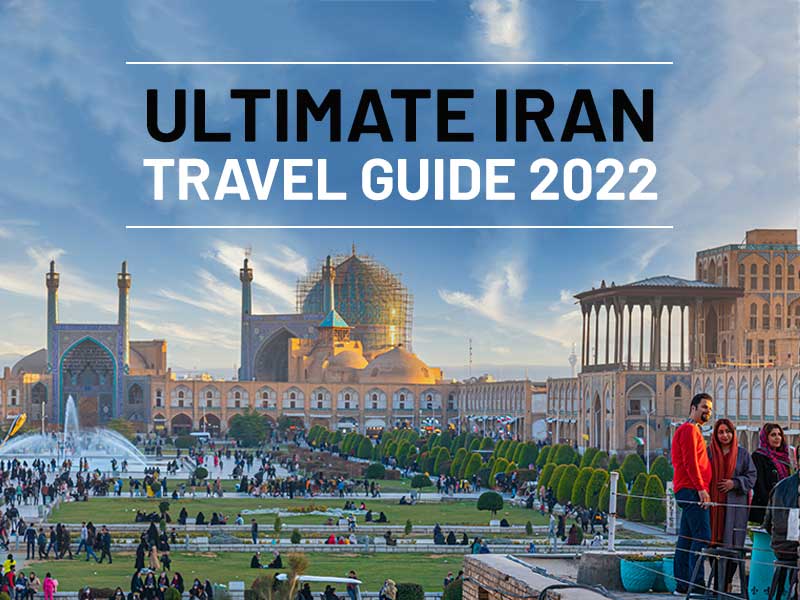
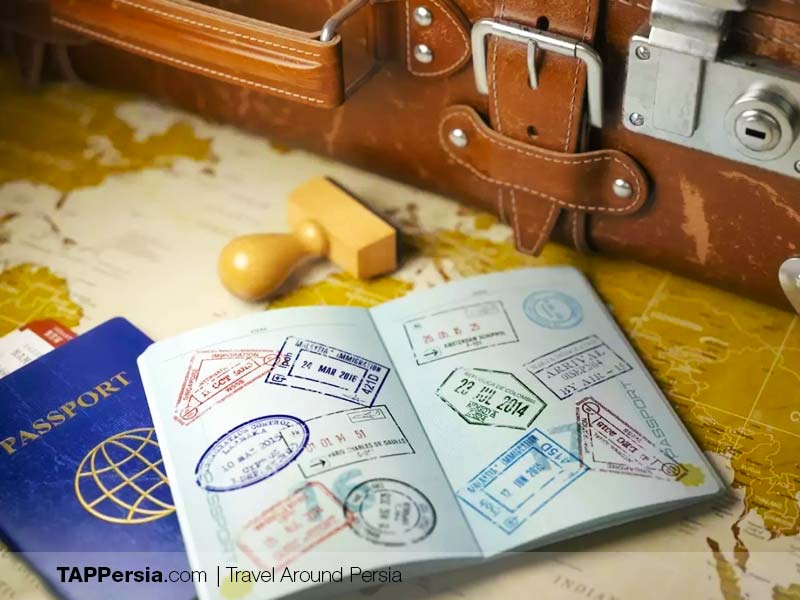
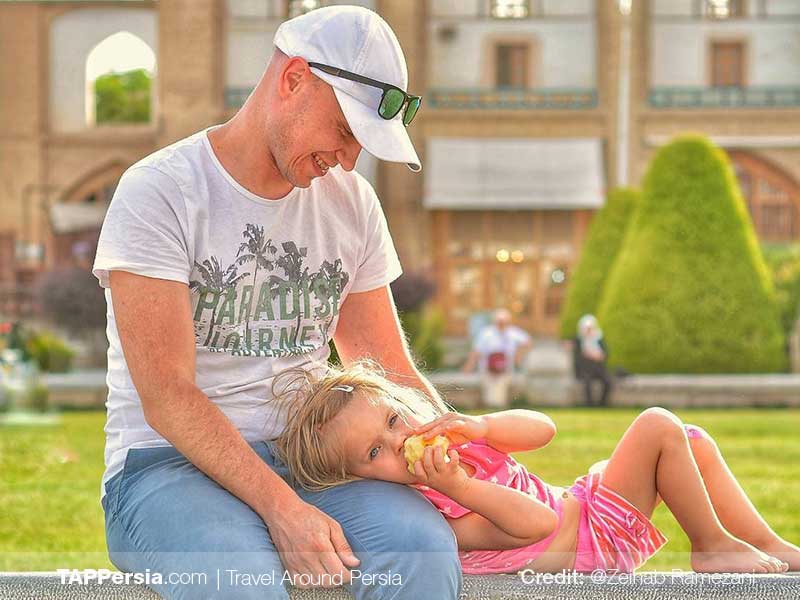
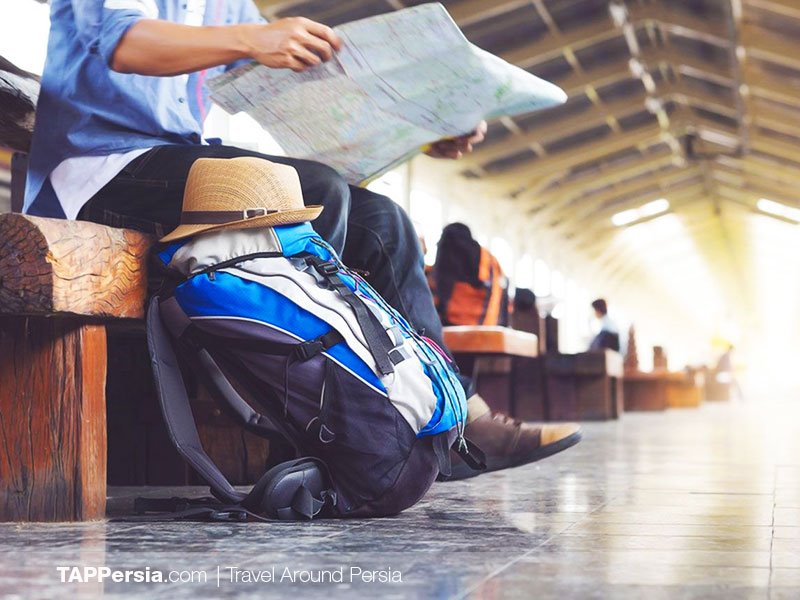
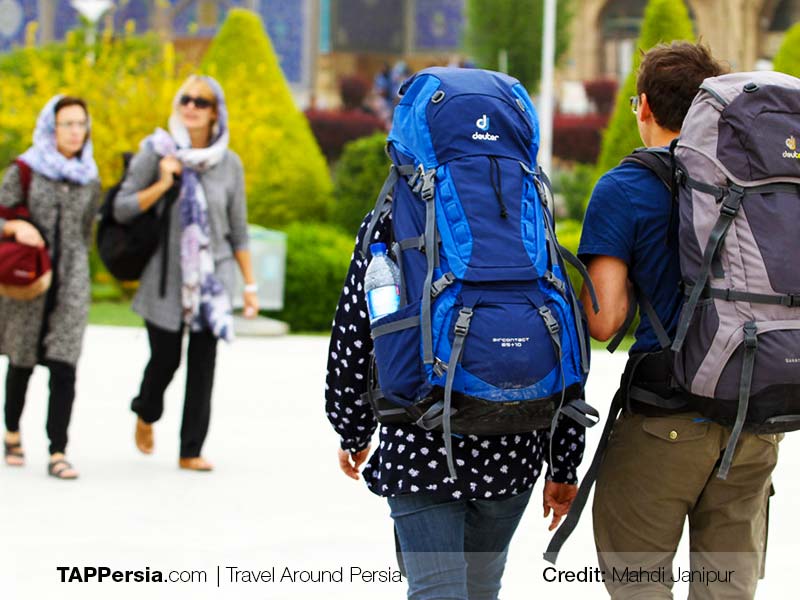

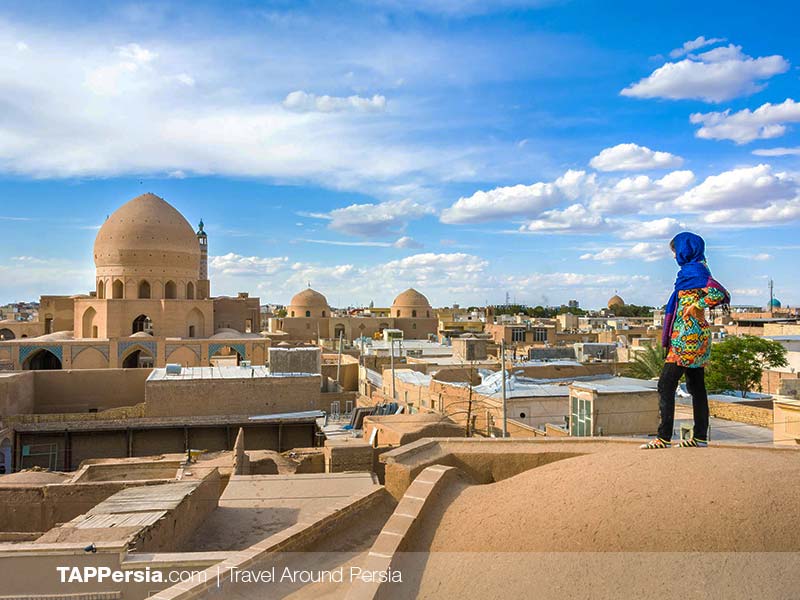
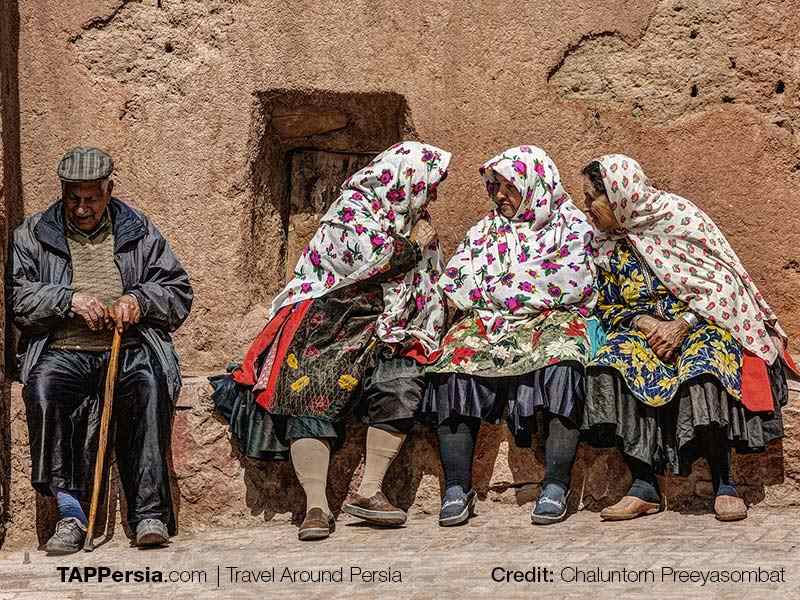
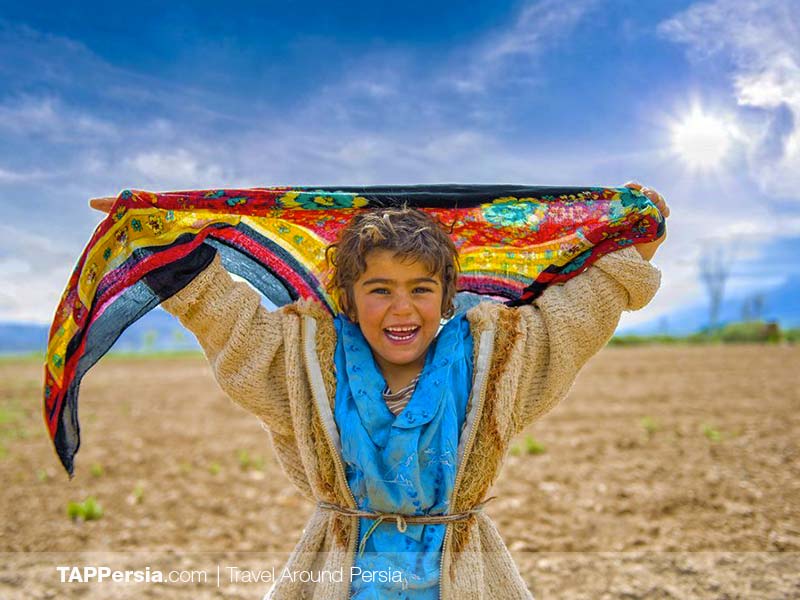
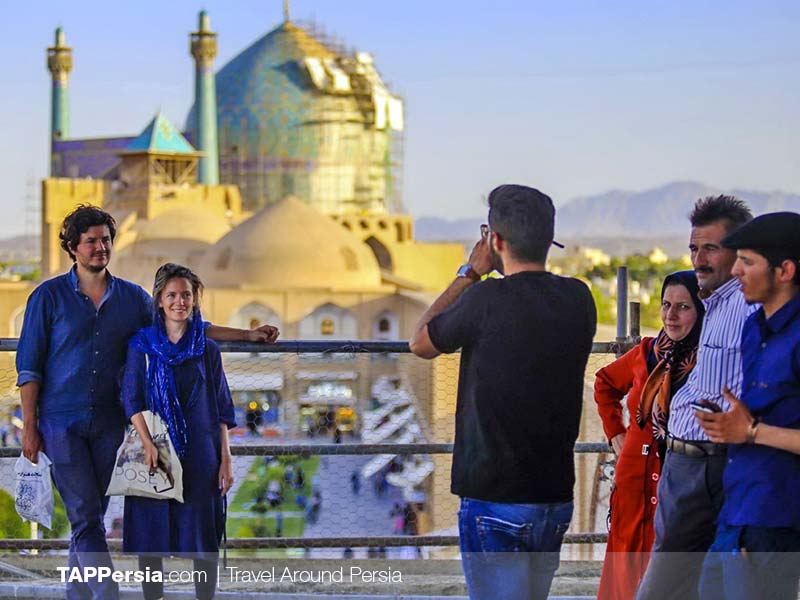
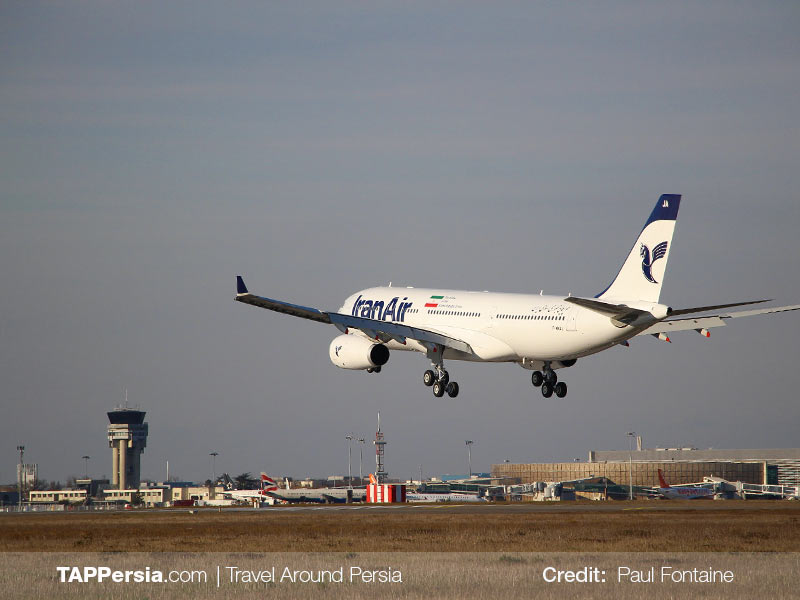
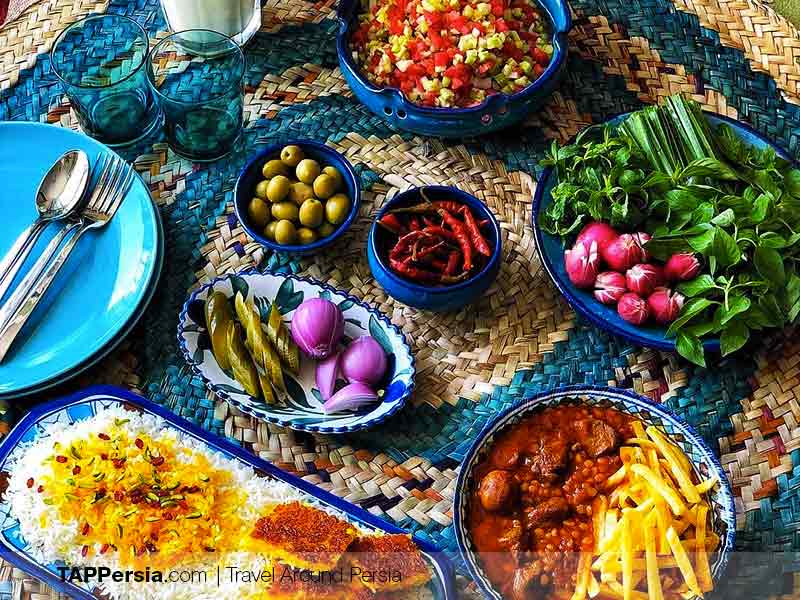
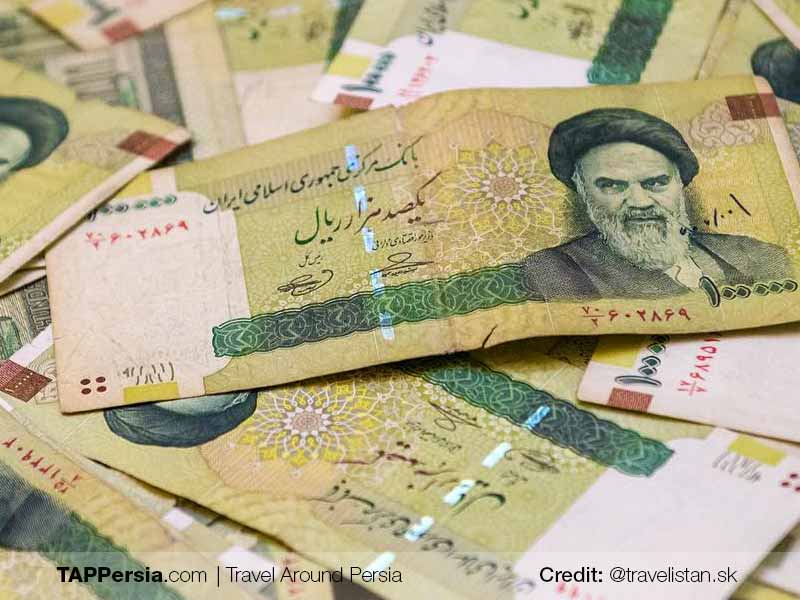
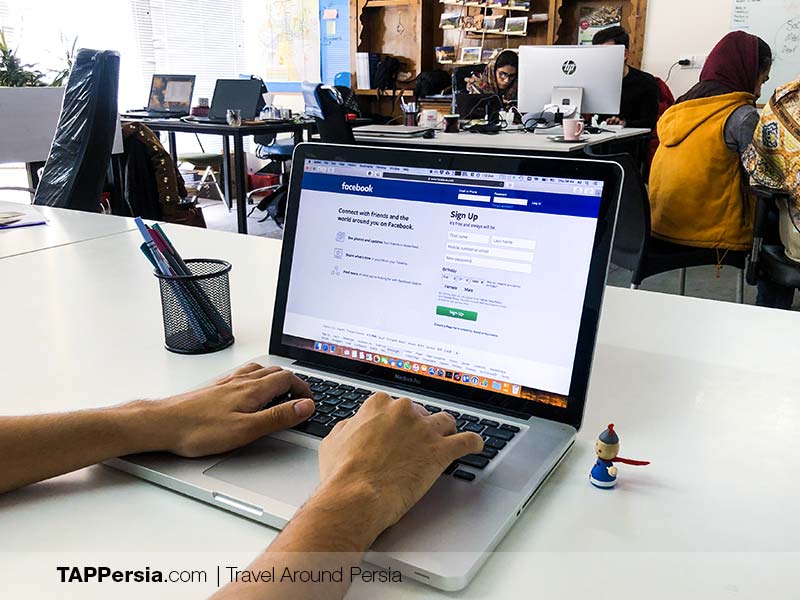
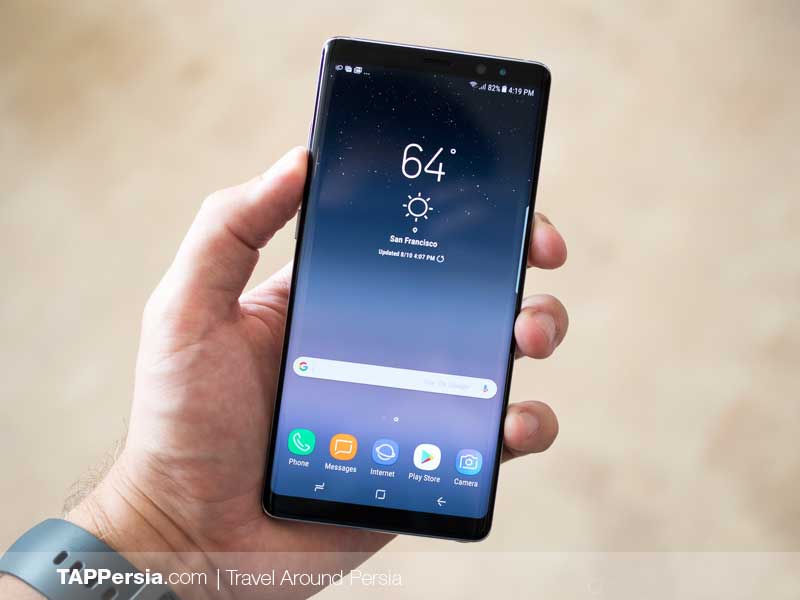
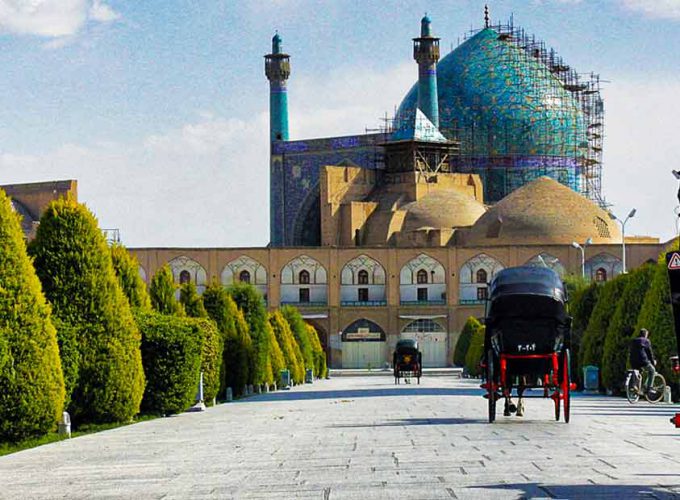
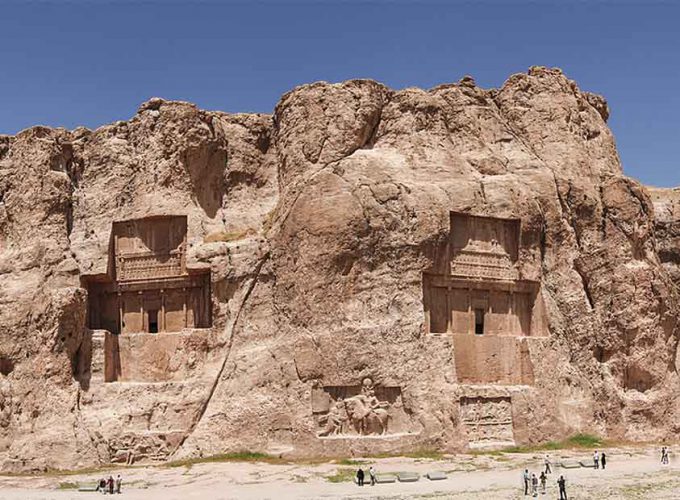
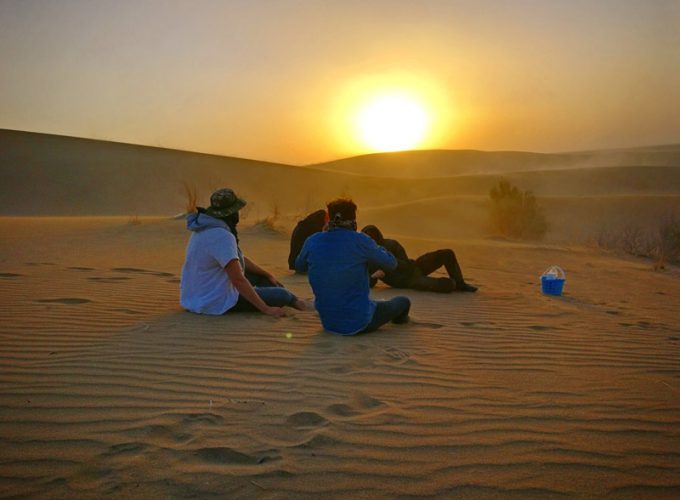
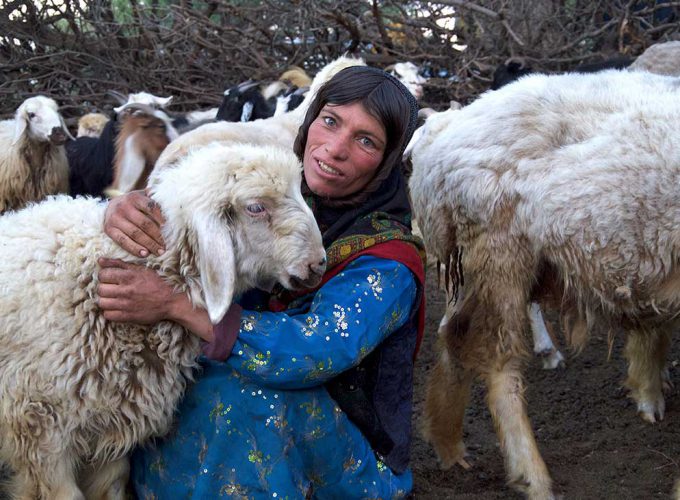
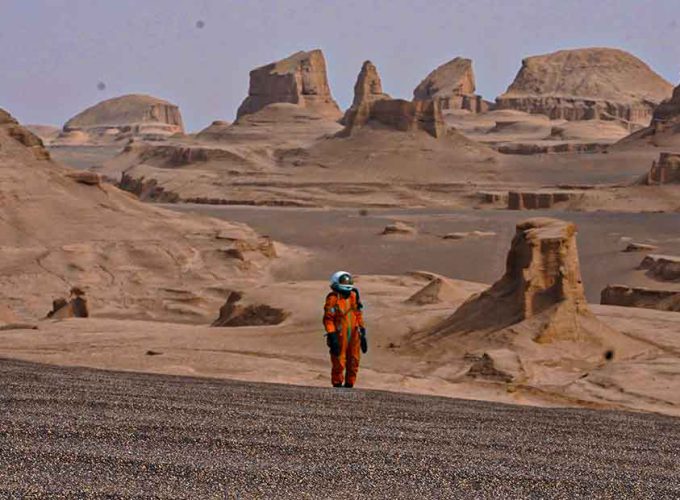
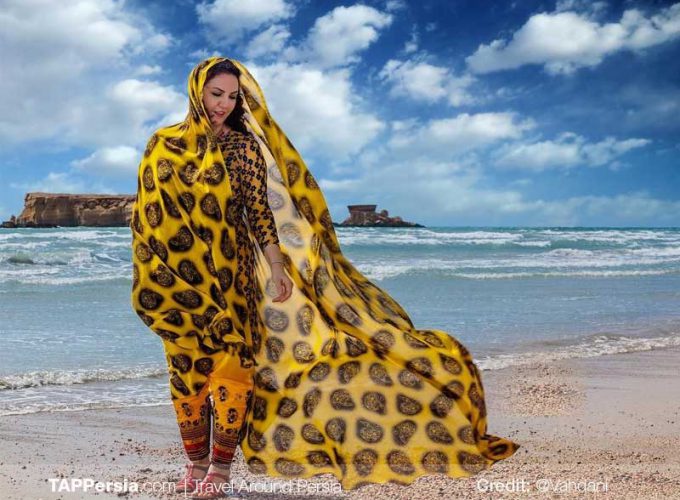


Excellent, very helpful and professional article.